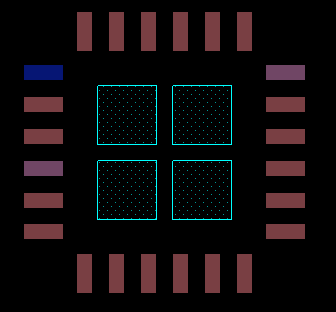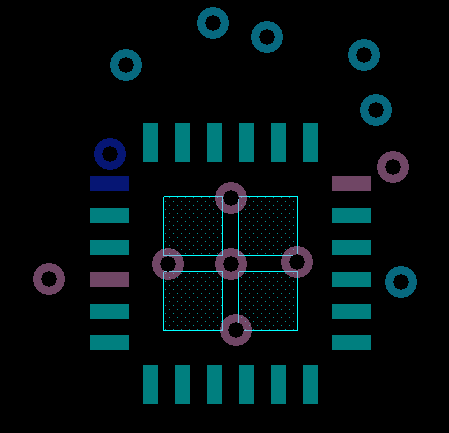ZHCSDJ6E February 2015 – June 2018 LMH1218
PRODUCTION DATA.
- 1 特性
- 2 应用
- 3 说明
- 4 修订历史记录
- 5 Pin Configuration and Functions
- 6 Specifications
-
7 Detailed Description
- 7.1 Overview
- 7.2 Functional Block Diagram
- 7.3
Feature Description
- 7.3.1 Loss of Signal Detector
- 7.3.2 Continuous Time Linear Equalizer (CTLE)
- 7.3.3 2:1 Multiplexer
- 7.3.4 Clock and Data Recovery
- 7.3.5 Eye Opening Monitor (EOM)
- 7.3.6 Fast EOM
- 7.3.7 LMH1218 Device Configuration
- 7.3.8 Power-On Reset
- 7.4 Device Functional Modes
- 7.5 Programming
- 7.6 Register Maps
- 8 Application and Implementation
- 9 Power Supply Recommendations
- 10Layout
- 11器件和文档支持
- 12机械、封装和可订购信息
10.2 Layout Example
The following example layout demonstrates how the thermal pad should be laid out using standard WQFN board routing guidelines.

Note: Thermal pad is divided into 4 squares with solder paste
Figure 28. LMH1218 Recommended Four Squares Solder Paste 
5 Vias without solder paste are located between 4 squares solder paste
Figure 29. LMH1218 Recommended Solder Paste Mask and Vias 
Top etch plus traces
Figure 30. Example Layout